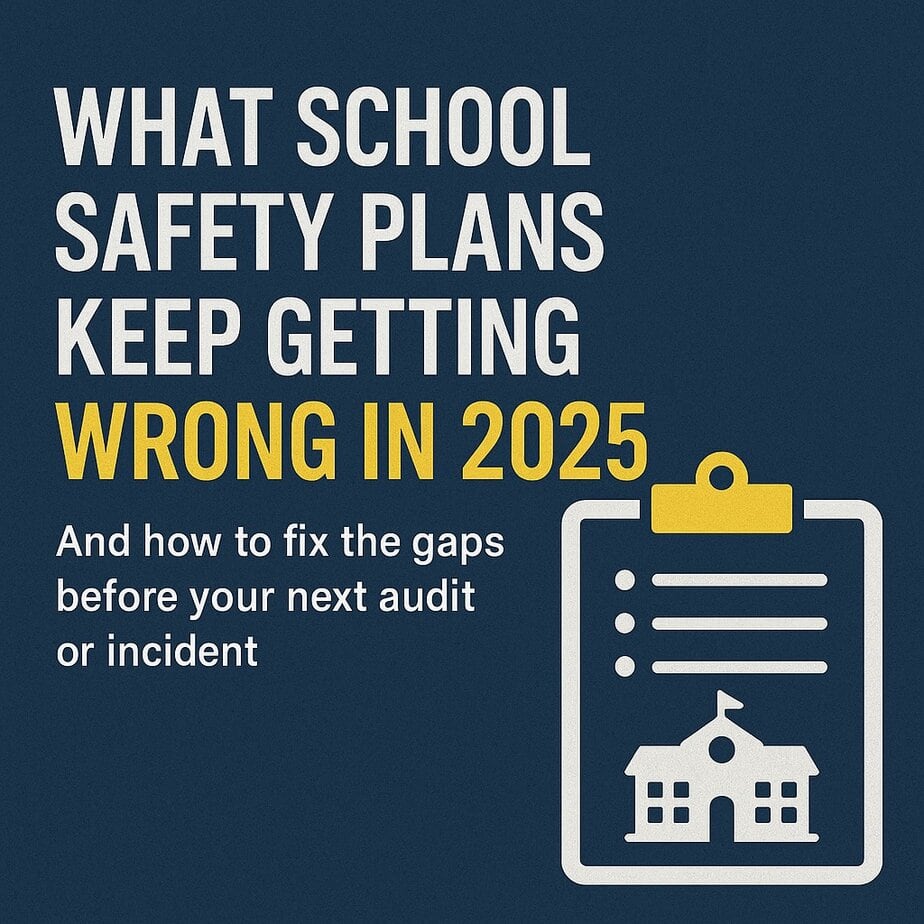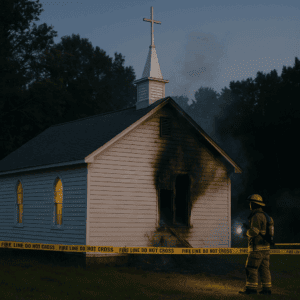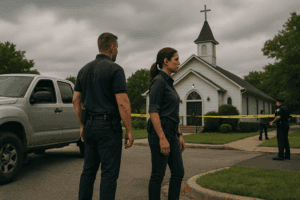The Problem Isn’t the Paperwork
Most schools have an Emergency Operations Plan. It checks the boxes. It has the right sections. It’s been reviewed by legal. Sometimes it even passes the audit.
But if you ask 10 staff members what they’re supposed to do in an actual emergency, you’ll usually get 10 different answers.
The problem isn’t a lack of information. It’s that the plan doesn’t match the real world, or the real people.
Here’s what we’re seeing across the country in 2025: the most common blind spots, disconnects, and failures in school safety planning.
1. The Plan Doesn’t Match the Building
Security is physical. So if your plan talks about access control, but your back hallway doors don’t fully latch, that’s a problem.
If your reunification plan involves buses pulling around to a side lot that’s now fenced off, same thing.
If your map hasn’t been updated since before the last construction project, that’ll show up fast in an audit.
What to do:
- Walk your campus with the plan in hand.
- Match every door, label, and procedure to the real space.
- Update the plan to reflect how your building actually works, not how it was designed in 2017.
2. Everyone Has a Job…But No One Knows Theirs
Most EOPs assign roles: incident commander, reunification lead, medical coordinator, hallway sweep team, etc. Sounds great.
But in practice?
- Staff change buildings or roles, and no one updates the plan.
- People don’t remember what they were assigned during in-service training six months ago.
- Nobody runs drills using their actual assigned job.
What to do:
- Print a one-pager with names + roles. Tape it up in the main office.
- Reassign jobs every August and document it.
- Include the “what you do” sheet in every drill folder.
3. Reunification Plans Are Still The Weakest Link
This one’s national.
Reunification is the one part of a plan most likely to go completely off the rails…not because people don’t care, but because it’s hard to run without chaos unless it’s rehearsed.
The plan might say “escort students to the church parking lot,” but:
- There’s no signage
- Staff don’t know the ID check process
- Nobody has copies of student contact info
- Parents show up angry, emotional, or both
What to do:
- Run a tabletop drill where your team walks through the first 15 minutes after a real evacuation.
- Assign one person to build the signage kit and print the rosters.
- Do not wait until an event happens to figure out where the cars go.
More here: Mastering Reunification Drills
4. Drill Logs Are Clean…But Habits Are Messy
You may have beautiful drill documentation. But walkthroughs from auditors and after-action reviews from real events are showing this:
- Staff don’t lock the classroom door until someone knocks.
- Students talk, move, or peek out windows during lockdown.
- Exterior doors are left unlatched during passing periods or lunch.
What to do:
- Stop doing “perfect drills” and start doing honest ones.
- If your drill looks clean but wouldn’t hold up under a real threat, rework the routine.
- Debrief the drill in plain English: what went right, what didn’t, what we fix.
5. Threat Assessment Exists on Paper Only
Most districts now have a Behavioral Threat Assessment Team. It’s often listed in the EOP or somewhere else. There’s usually a flowchart, maybe even a training slide deck.
But here’s what goes wrong:
- No one remembers how to make a referral.
- No one monitors the email inbox.
- The team doesn’t meet unless something major happens.
What to do:
- Test it. Have a staff member submit a mock report. See what happens.
- Review past cases. Was there follow-up? Documentation? Parental contact?
- Treat threat assessment like fire safety — routine, not reactive.
Related: Threat Assessments for Schools: A Guide
Final Word
If your plan passed an audit last year, that’s good. But it doesn’t mean it would hold up tomorrow.
The difference between a plan that looks good on paper and one that works when it matters isn’t regulation…it’s readiness.
And readiness starts by being honest about what still isn’t working.
Need to Rework the Gaps?
We help schools identify the disconnects between what’s written and what’s real.
Whether it’s updating your plan, running realistic drills, or fixing your reunification mess…we can help.
Be sure to check out our Digital Downloads if you’re rebuilding in-house.






